This post may contain affiliate links. Please read my privacy policy.
Squid curry - tender squid in a rich, aromatic sauce. Made with curry spices, it perfectly balances heat and creaminess, making it ideal for seafood curry lovers.
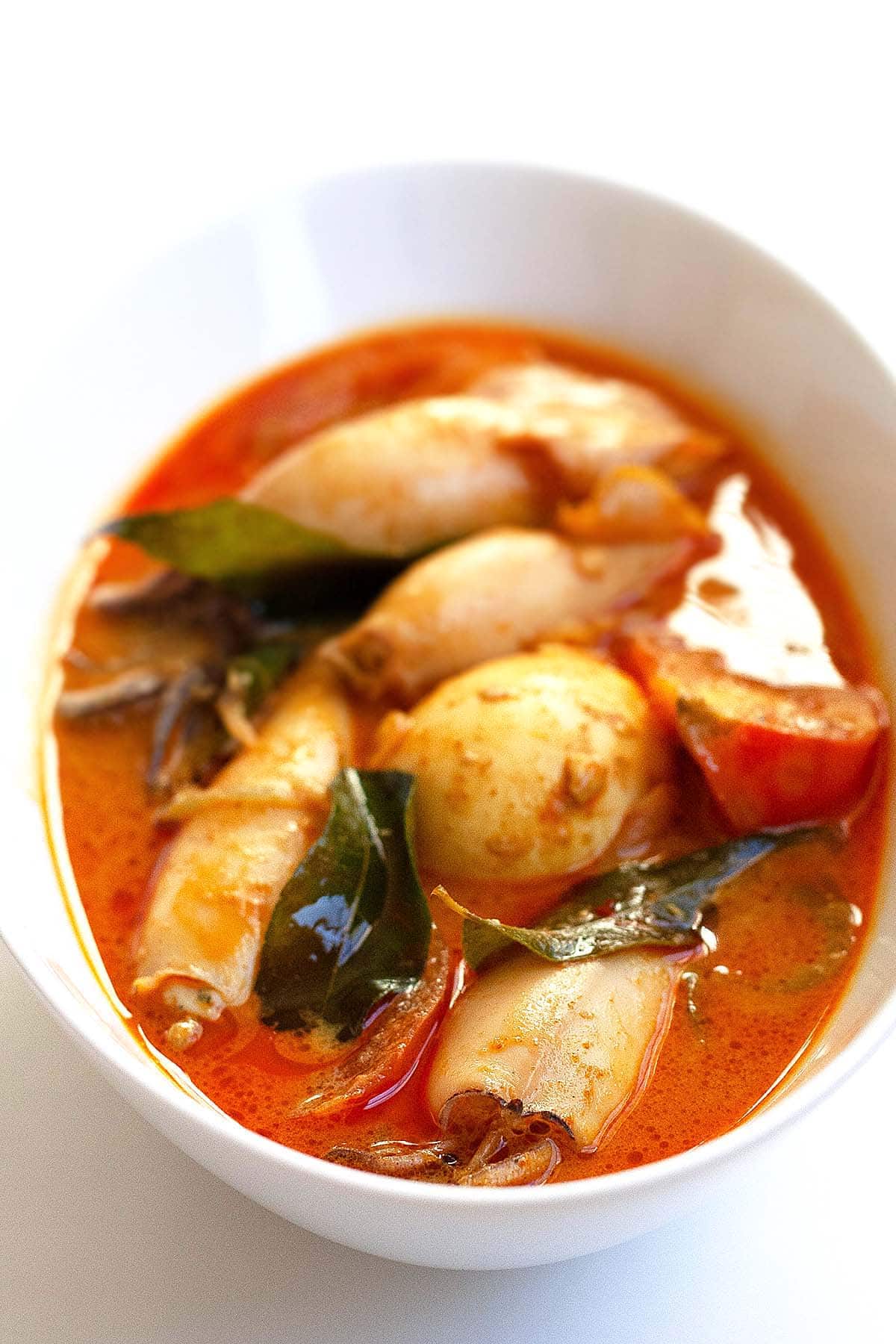
Seafood Curry
Growing up, nasi kandar was more than just a meal for my family; it was an experience steeped in tradition and flavor. Nasi kandar, a cornerstone of Mamak or Indian-Muslim cuisine, features steamed rice paired with a medley of curries and side dishes such as garlic naan, samosa, and tandoori chicken, creating a colorful and aromatic feast.
In my childhood, trips to nasi kandar restaurants were a family ritual. I have vivid memories of the old joint in Georgetown, Penang, where my late parents would take me. Every visit home to Penang includes at least one outing to enjoy nasi kandar at their favorite spot.
I love seafood curry, especially squid curry, known as gulai sotong at the restaurant. In Malay, “gulai” means curry and “sotong” means squid. This dish is a staple in our family’s culinary adventures.
Seafood curry is incredibly versatile and can be made with a variety of seafood like shrimp, fish, squid, and crab, allowing for delicious combinations. My late mother’s seafood curry recipe, especially her legendary gulai sotong, is a cherished family tradition that I’m grateful to have inherited.
Why You’ll Love This Squid Curry Recipe
- Tender squid pieces cooked to perfection, absorbing flavorful spices.
- Rich and aromatic curry sauce made with coconut milk.
- A harmonious blend of spices, offering a balance of heat and depth.
- Comforting and satisfying, perfect served with rice or bread (such as naan or roti canai). A dish that delights with its unique textures and savory flavors.
What Goes Into Seafood Curry
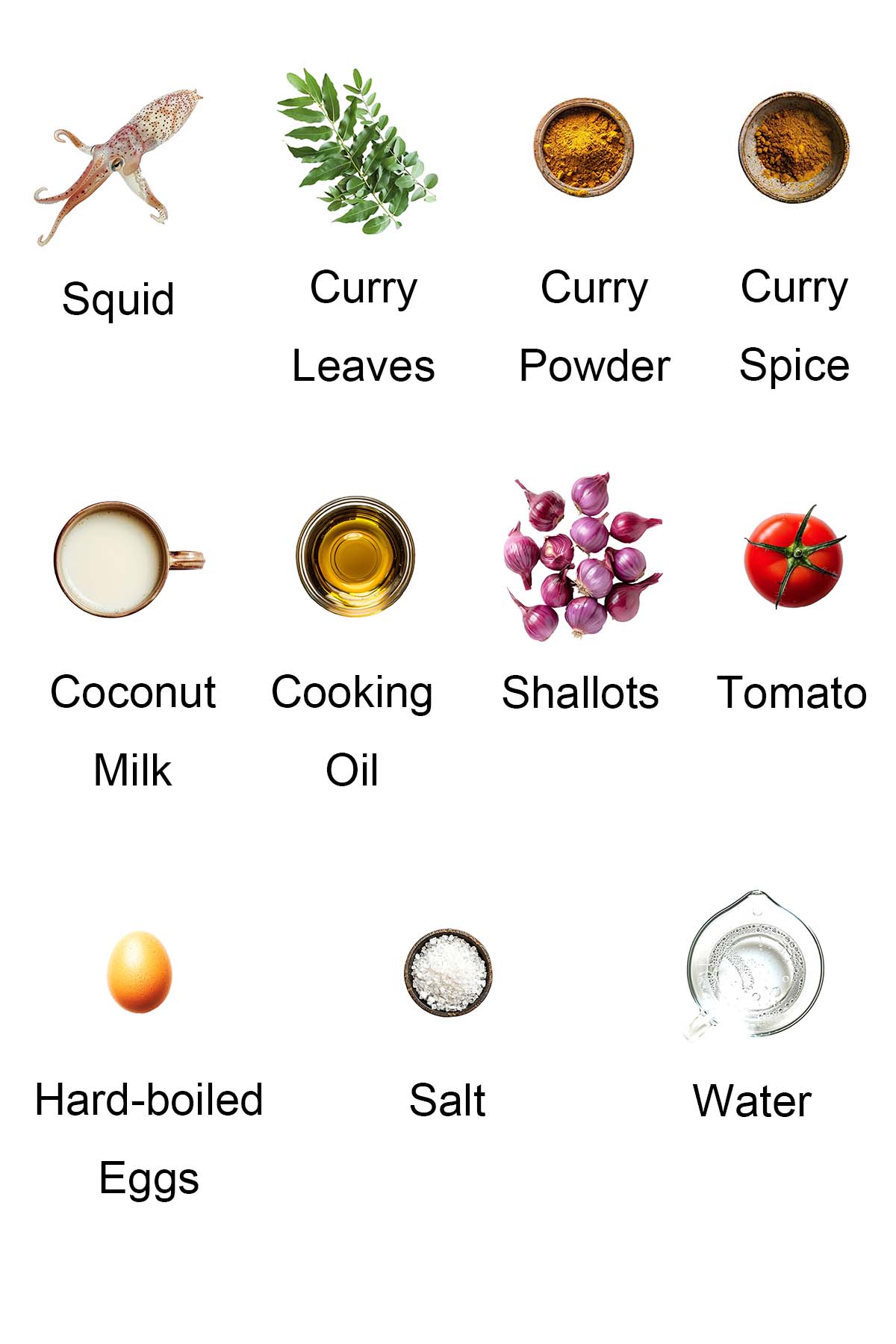
- squid – you can substitute with shrimp, tiger prawns, whole fish, or fish fillets. Feel free to use a combination of your favorite seafood options.
- seafood curry powder – I recommend Baba’s brand seafood curry powder, which is made in Malaysia. I also like Alagappa brand.
- shallots
- curry leaves – curry leaves impart a highly aromatic flavor to the curry, while the blend of curry spices adds a distinctive and unmistakable Indian curry kick.
- coconut milk
- tomato wedges
- hard-boiled eggs, optional – I love adding hard-boiled eggs to curry because they absorb the rich flavors of the spices and curry sauce, making the eggs deeply flavorful and yummy!
See the recipe card for full information on ingredients.
Curry Spices
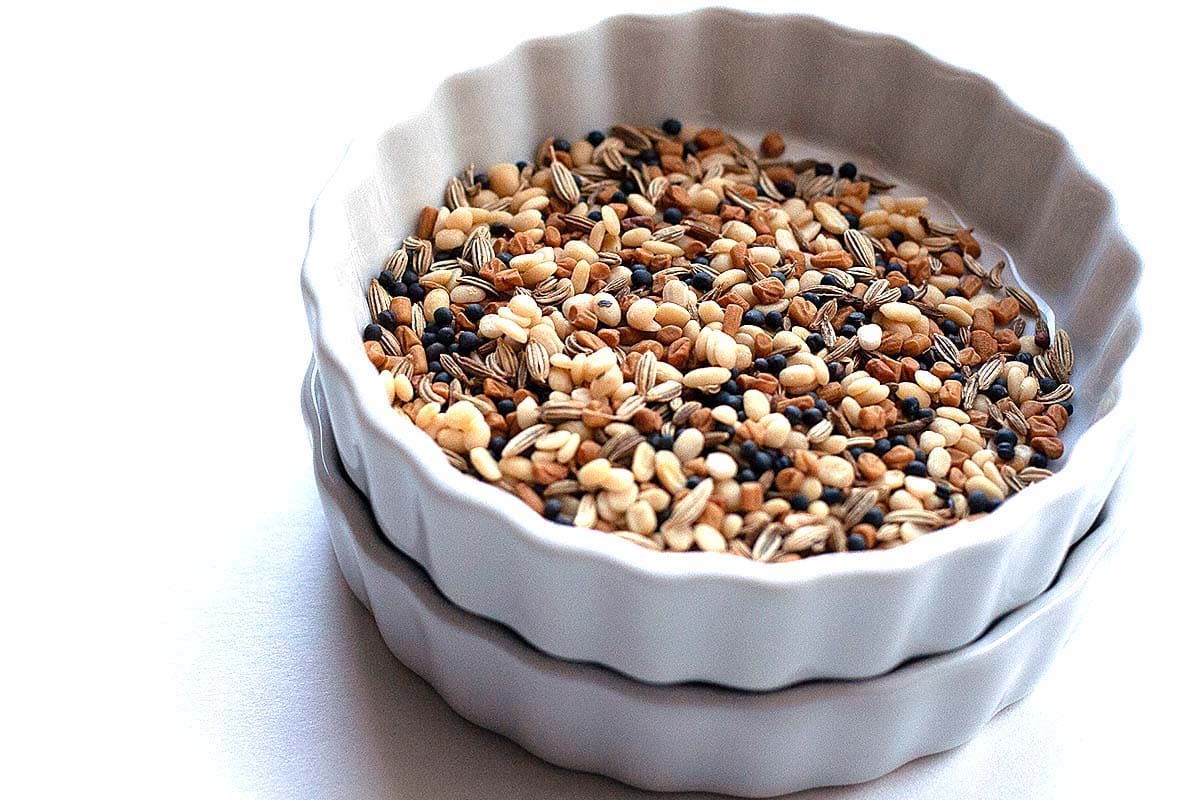
Curry spices encompass a diverse blend of aromatic ingredients such as coriander, chilli, cumin, turmeric, fennel, fenugreek, black Pepper, white pepper and dhall, which impart complex flavors and vibrant colors to curry dishes.
The secret ingredient for this recipe is the curry spices mix commonly found in Malaysia (pictured above), which includes fenugreek, black mustard, cumin, and fennel seeds. Adding these spices to the cooking process further elevates the dish with their aromatic flavors and unique blend of earthy notes, enhancing the depth and richness of the squid curry. To make the curry spices at home, simply combine equal portions of these spices and store them in an airtight container.
How To Make Squid Curry
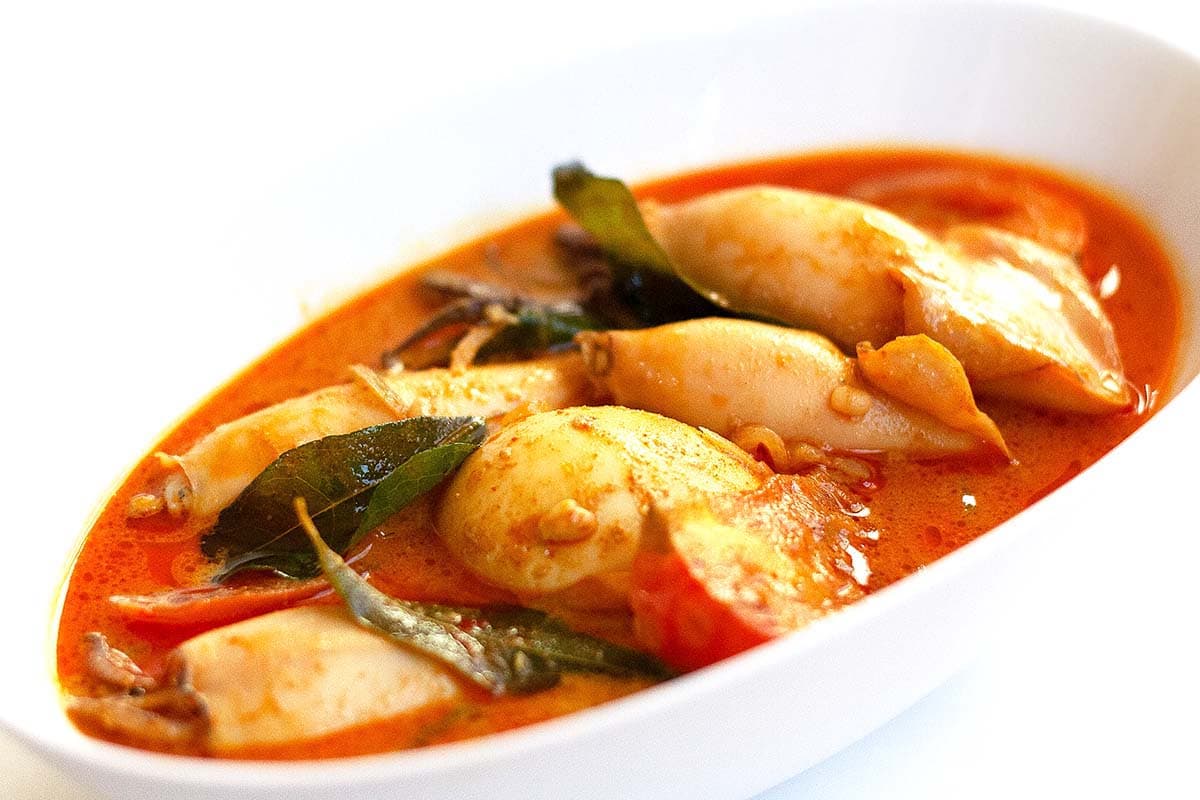
Step 1: Clean the squid thoroughly and set it aside. In a pot, heat the cooking oil and saute the shallots until fragrant. Once the aroma of the shallots fills the air, add the squid, curry powder, curry leaves, curry spices, and tomato wedges to the pot. Stir quickly for 1 minute, then remove the squid from the pot and set it aside to prevent overcooking.
Step 2: Add coconut milk, water, and hard-boiled eggs to the curry and bring it to a boil for 8 minutes. Next, return the squid to the pot and boil briefly for 1 minute to prevent it from shrinking. Add salt to taste. Serve hot with steamed rice.
Helpful Tips For Home Cooks
Making curry may seem intimidating for beginner home cooks, but don’t worry! I’ve got you covered with these quick tips that guarantee kitchen success:
- Fresh Squid: Look for firm, clear-eyed squid with a plump tube, which may indicate eggs inside. Smaller squids are usually more tender, but larger ones are easier to handle.
- Clean Well: Peel skin, then remove the beak, quill and ink sac. Rinse under cold water while cleaning.
- Avoid Overcooking: Cook the squid quickly for 1-2 minutes and then remove it from the heat. Add the squid back towards the end of the cooking process.
Shopping Guide: If you’re in the United States or other Western countries, you can find frozen squid in boxes, or pre-cleaned whole squid or squid rings packed in plastic packages. For this recipe, it’s best to buy whole squid. Thaw the squid at room temperature before using.
Frequently Asked Questions
Rinse the squid thoroughly.
To reduce spiciness, use less chili powder or fresh chilies. You can also add more coconut milk to mellow the heat.
Squid should be cooked quickly to prevent it from becoming rubbery. Typically, it takes about 2 minutes: 1 minute during the stir-fry and another 1 minute in the curry.
Squid curry can be stored in the refrigerator for up to 2-3 days. Ensure it is stored in an airtight container.
Yes, you can make squid curry in an Instant Pot. Use the sauté function to cook the spices and aromatics, then add the squid and other ingredients. Cook on low pressure for 1-2 minutes to avoid overcooking the squid.
This recipe is only 359 calories per serving.
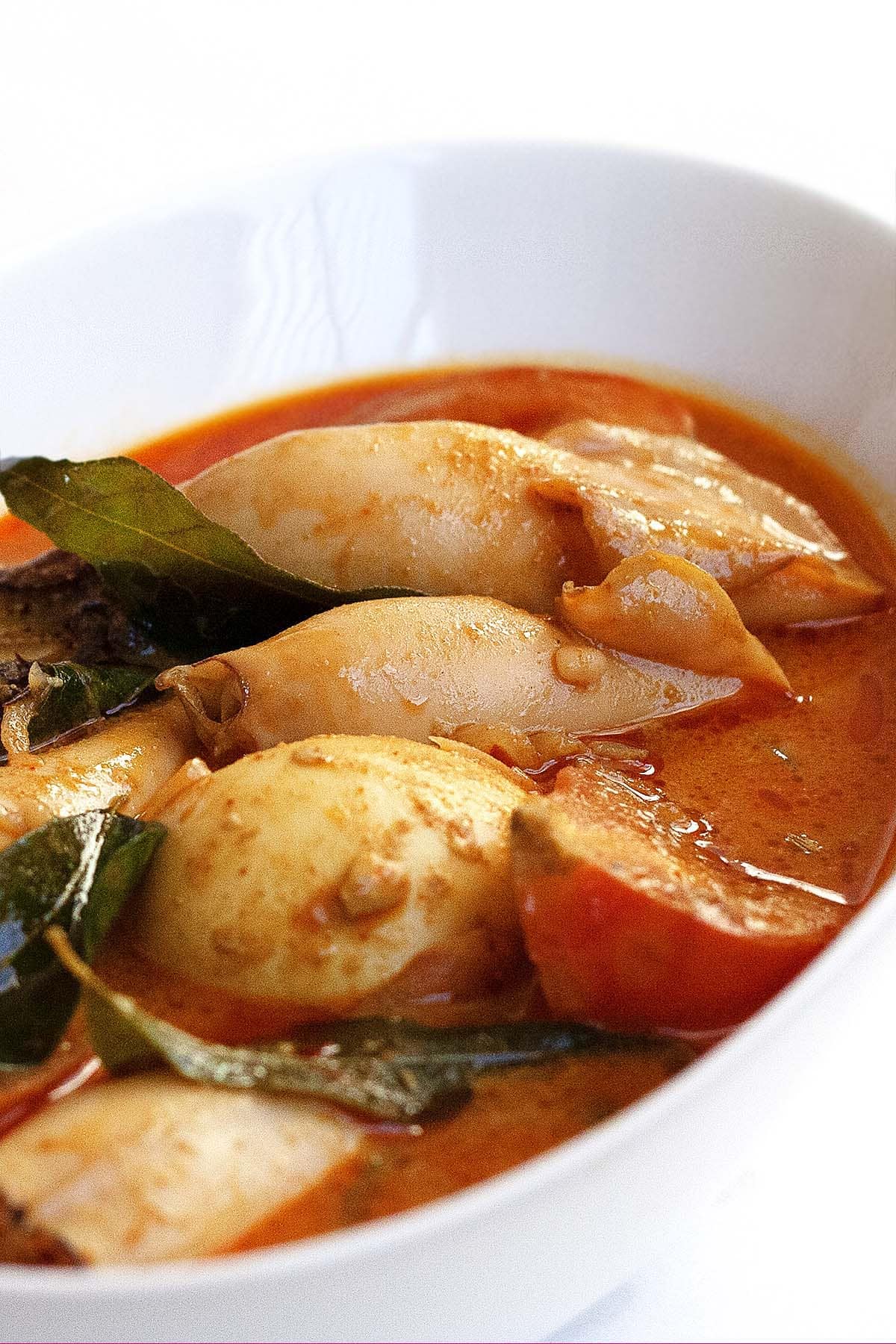
What To Serve With This Recipe
For a wholesome Malaysian meal at home, I recommend the following recipes.
I hope you enjoy this post as much as I do. If you try my recipe, please leave a comment and consider giving it a 5-star rating. For more easy and delicious recipes, explore my Recipe Index, and stay updated by subscribing to my newsletter and following me on Facebook, Pinterest, and Instagram for new updates.
Other Recipes You Might Like
- Malaysian Chicken Curry
- Devil’s Curry
- Cardamom Chicken (Masala Murgh)
- Chinese squid recipe (Three Cup Squid)
- Thai squid recipe (Thai Basil Squid)

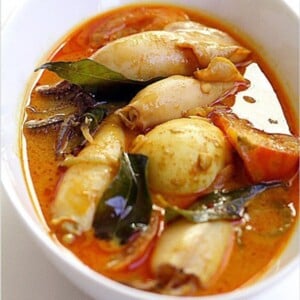
Squid Curry
Ingredients
- 1 lb (500g) squid, cleaned
- 2 tablespoons cooking oil
- 4 shallots, peeled and thinly sliced
- 4 tablespoons Baba’s fish curry powder
- 1 teaspoon curry spices (a mix of fenugreek, black mustard, cumin, and fennel seeds)
- 1 tomato, cut into wedges
- 1 sprig curry leaves, discard the stem
- 150 ml coconut milk
- 2 cups water
- 4 hard-boiled eggs, optional
- salt , to taste
Instructions
- Clean the squid thoroughly and set it aside. In a pot, heat the cooking oil and sauté the shallots until fragrant. Once the aroma of the shallots fills the air, add the squid, curry powder, curry leaves, curry spices, and tomato wedges to the pot. Stir quickly for 1 minute, then remove the squid from the pot and set it aside to prevent overcooking.
- Add coconut milk, water, and hard boiled eggs (if using) to the curry and bring it to a boil for 8 minutes. Next, return the squid to the pot and boil briefly for 1 minute to prevent it from shrinking. Add salt to taste. Serve hot with steamed rice.
Notes
- If you find the squid head and tentacles unsightly, tuck them into the squid tube to keep them from hanging loose. This handy trick was passed down to me by my late mother.
- Fresh Squid: Look for firm, clear-eyed squid with a plump tube, which may indicate eggs inside. Smaller squids are usually more tender, but larger ones are easier to handle.
- Clean Well: Peel skin, then remove the beak, quill and ink sac. Rinse under cold water while cleaning.
- Avoid Overcooking: Cook the squid quickly for 1-2 minutes and then remove it from the heat. Add the squid back towards the end of the cooking process.
Nutrition
Nutrition information is automatically calculated, so should only be used as an approximation.
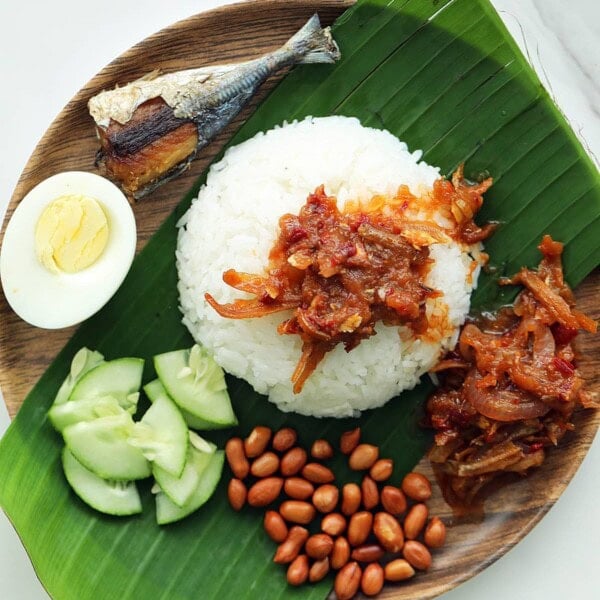

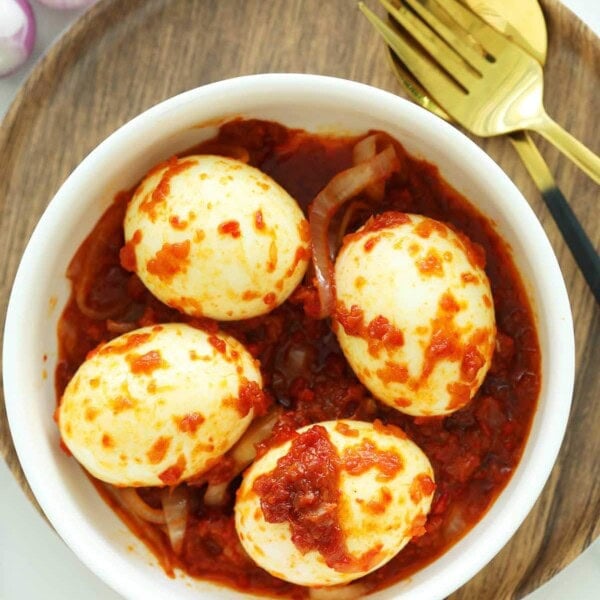
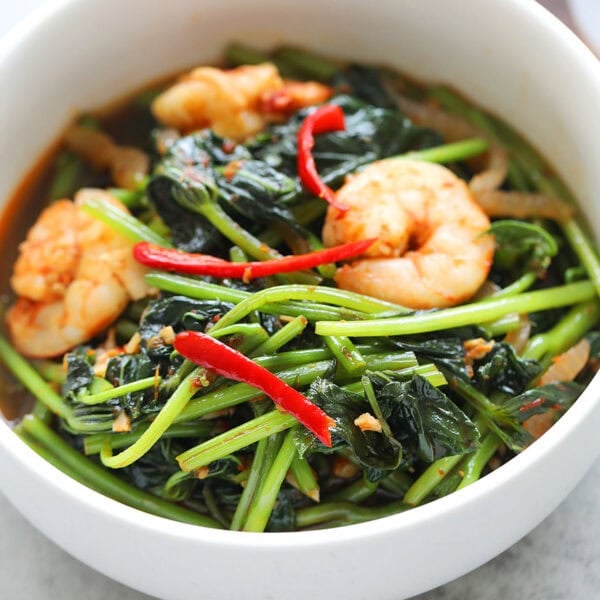






NOW YOU ARE TALKING BEE! Squid is my most favourite seafood. Can I ask you a question please. My mother was given a Malay Squid Recipe by a friend of hers back in 1952 who hailed from Malaya It was a dry squid curry, cooked with tamarind. I never got that recipe from my mum before she died. I am hoping you have heard of that recipe, but to be truthful; it was “BLOODY BEAUTIFUL!” I don’t know if any spices were used but it was a sour taste from memory. 1952 is a long time back for me to remember but I recall loving that dish and it was my first encounter with squid. Hope you know what I am talking about, and can put me on the right track. I am about to make the SAMBAL Recipe you have sent me. I do love that Malaysian Sambal! Cheers
Hi Grant, thanks for your comment. Yes, I do know about dry squid sambal that you mentioned. It’s a true Malay recipe, and nasi lemak vendors offer it as a topping. I love it, too, but I will have to create and post the recipe some day! I have two sambal recipes, one is the cooked sambal, and the other one is the wet sambal which is a condiment. Cooked sambal can use used to make a variety of dishes.
I love squid, and would love to know how to make a SQUID CURRY. Regrettably, you speak of a curry powder called BABA’s Fish Curry powder. NOT AVAILABLE IN AUSTRALIA! DOH!
Hi Grant, from our research, Baba’s Fish Curry Powder is available online in Australia.
Good
What do you mean by Baba’s fish curry powder? Where can we find it?
Baba’s fish curry powder is from Malaysia. You can use other brands.
Hello! When you say cumin, do you mean the powder, or the seeds? :) Thank you!
Seeds.
Hello, I’m making the curry squid tomorrow. Do I leave the boiled eggs whole and put in the stew or slice them?
Whole eggs.
Bee, I think it is better to fry all spices well before we add in the sotong as Curry powder needs to fry well until red oil comes out then you may add in the sotong. Dish up after fried for 1 min and then add in the tomato and fry for awhile and then simmer for 10 mins to remove all the raw smell of the curry powder. Chef Wan taught us to mix the curry powder or chilli powder to a paste and let it stand for 20 mins before cooking so that the powder is fully activate before we fry it. I never fry the seafood if cooking curry, but I will try your way, may be it tastes much better. Thanks for sharing and too many young ladies can’t cook until they go to overseas and forced to cook and you’re their Life saver !! Keep up the good job.
Rebecca thanks for your suggestions. Yes I do it your way sometimes…but I simplify many of my recipes to make them more accessible to most people. :)
I agree…as a Malaysian-Indian, we always fry the spices and curry powder first. My mom swears this will extract the flavor better and that this is the best way too cook the powder fully. We also fry the onions with garlic and ginger (ground up in mortar and pestle). It takes away the ‘fishiness’ smell/flavor :)